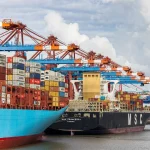Liga Asuransi – Dear readers, how are you? I hope your business is always doing well.
As a senior insurance broker, this time, I would like to discuss the Social Risks, one of the leading causes of loss in insurance.
As we all know, Indonesia is entering the political year, and a general election will be arranged in 2024. There will be more than 10 political parties to compete, and 3 couples of presidential and vice-presidential candidates to compete simultaneously. This situation can trigger social risks if it is not well managed.
If you are interested in this article, please share it with your friends so they can understand as you do.
In today’s interconnected and rapidly changing world, individuals and companies face various social risks that can significantly impact their lives and livelihoods. Social risks refer to any potential event or situation that could harm individuals or communities, such as natural disasters, political instability, economic downturns, or social unrest.
These risks can arise from various factors, including demographic changes, environmental factors, geopolitical tensions, or economic shifts.
Therefore, individuals and companies must know these social risks to prepare for and mitigate their potential impacts.
By identifying and understanding social risks, individuals and companies can reduce their exposure to potential harm, ensure business continuity, and protect their assets and investments. In short, awareness of social risks is essential for individuals and companies to make informed decisions, manage uncertainties, and build resilience in the face of a rapidly changing world.
WHAT ARE SOCIAL RISKS?
Social risks are the potential negative consequences or impacts of human interactions, relationships, and behavior. These risks can arise from various social factors, such as culture, politics, economics, and technology, and can affect individuals, groups, and society.
Overall, social risks are complex and multifaceted. They require a careful analysis of the underlying factors that contribute to their emergence and a proactive approach to addressing them to minimize their negative impacts on individuals, groups, and society.
To give you a better understanding of social risks, please continue reading the following short story:
“A small country called Saphira was known for its beautiful landscapes, rich culture, and diverse population. However, in recent years, the country has experienced increased ethnic tensions, political polarization, and social unrest.
As a result, the country’s economy began to suffer. Foreign investors became hesitant to invest in Saphira, fearing instability and uncertainty. Tourism, a major source of income for the country, declined as travelers became concerned about safety and security.
Meanwhile, the government needed help to respond to the country’s social risks. Protests and demonstrations became a regular occurrence, and some turned violent. The government’s response was often seen as heavy-handed, further eroding trust between citizens and the state.
As the social risks continued to escalate, the economy of Saphira continued to decline. Unemployment rose, and businesses struggled to stay afloat. The country’s infrastructure and public services also suffered as resources were diverted to address social unrest.
When the government and civil society groups came together to address the underlying causes of the social risks, progress began to be made. Investments were made in education, healthcare, and job training programs to reduce economic inequality and promote social inclusion.
Slowly but surely, the economy of Saphira began to recover. Foreign investors returned, tourism picked up, and businesses started to thrive again. The country became known for its peaceful and inclusive society, with citizens of all backgrounds working together towards a common goal.
The lesson learned was that social risks can have a significant impact on the economy of a country. Still, addressing the underlying causes and promoting social inclusion and resilience can overcome these challenges and build a brighter future.”
Examples of social risks can include:
- Discrimination and prejudice
Social risks are complex and multifaceted. They require a careful analysis of the underlying factors that contribute to their emergence and a proactive approach to addressing them to minimize their negative impacts on individuals, groups, and society.
These social risks arise when people are unfairly treated based on race, gender, religion, sexual orientation, or other personal characteristics. Discrimination and prejudice can lead to social exclusion, marginalization, and violence.
- Cyberbullying
This social risk is associated with using technology and social media platforms. Cyberbullying is using electronic communication to bully, harass, or intimidate others. Cyberbullying can have serious consequences on its victims’ mental health and well-being.
- Political polarization
This social risk is associated with the growing divide between political ideologies and viewpoints. Political polarization can lead to social fragmentation, loss of trust in institutions, and even political violence.
- Economic inequality
This social risk is associated with disparities in income and wealth distribution. Economic inequality can lead to social unrest, political instability, and even economic crises.
- Climate change
This social risk is associated with the impact of human activity on the environment. Climate change can lead to social and economic disruption, displacement of populations, and even conflict.
HOW DO SOCIAL RISKS INFLUENCE THE ECONOMY OF A COUNTRY?
Social risks can have a significant impact on the economy of a country. Addressing social risks and promoting social stability can help to create a more productive, resilient, and sustainable economy.
Social risks can significantly impact a country’s economy in several ways. Here are some examples:
- Reduced productivity
Social risks such as discrimination and inequality can lead to reduced productivity in the workplace. When people feel marginalized or unfairly treated, they may be less motivated to work effectively, leading to lower output and efficiency.
- Increased healthcare costs
Social risks such as stress, anxiety, and depression can increase healthcare costs. Mental health issues are often associated with social risks such as discrimination, social exclusion, and economic inequality and can result in higher healthcare expenditures for individuals and society.
- Reduced consumer spending
Social risks such as economic inequality can lead to reduced consumer spending, as people struggling to make ends meet may be less likely to spend money on discretionary items. This can hurt businesses and the overall economy.
- Political instability
Social risks such as political polarization and unrest can lead to political instability, harming the economy. Political instability can lead to uncertainty among investors, reduced confidence in institutions, and even economic crises.
- Disrupted supply chains.
Social risks such as natural disasters or conflicts can disrupt supply chains, hurting the economy. Disrupted supply chains can lead to shortages of goods and services, which can drive up prices and reduce economic activity.
WHAT ARE THE CAUSES OF SOCIAL RISKS?
It is important to note that social risks are often interconnected, and addressing one risk may require addressing multiple underlying factors. Furthermore, social risks can vary widely between cultures, societies, and regions and can be influenced by historical, economic, and political factors.
Understanding the causes of social risks is essential in addressing them and promoting social stability and well-being.
There are a variety of factors that can contribute to the emergence of social risks. Here are some examples:
- Structural factors
Social risks can arise from the structures and systems of society. For example, economic inequality can be caused by unequal access to education, healthcare, and employment opportunities.
- Cultural factors
Social risks can also arise from cultural attitudes and beliefs. Discrimination and prejudice, for example, can be caused by cultural norms and stereotypes.
- Technological factors
Social risks can be influenced by technology, such as the rise of social media and its impact on cyberbullying.
- Environmental factors
Environmental factors like natural disasters and climate change can also influence social risks.
Political factors
Political factors like policies and laws can also influence social risks, leading to social exclusion or discrimination.
EXAMPLE OF SOCIAL RISKS IN INDONESIA
- Ethnic and religious conflicts
Indonesia is a diverse country with many different ethnic and religious groups. Throughout its history, Indonesia has experienced conflicts between these groups, including the violent communal clashes that occurred in the late 1990s in places like Ambon and Poso.
- Political instability
Indonesia has also experienced political instability in the past, including the downfall of President Suharto in 1998 after more than 30 years of authoritarian rule. Protests, riots, and social unrest marked the transition to democracy.
- Natural disasters
Indonesia is prone to natural disasters, including earthquakes, tsunamis, and volcanic eruptions. These disasters can have significant social impacts, including displacement, loss of life, and economic disruptions.
- Economic inequality
Like many developing countries, Indonesia has struggled with economic inequality, with disparities in income and access to essential services like healthcare and education. This has contributed to social risks such as poverty, social exclusion, and crime.
- Environmental risks
Indonesia is home to some of the world’s most important tropical forests and coral reefs. Still, these natural resources are threatened by deforestation, pollution, and climate change. These environmental risks can have significant social impacts, including displacement and loss of livelihoods.
HOW TO PREVENT AND REDUCE SOCIAL RISKS?
Preventing and reducing social risks may require a long-term and sustained effort and collaboration between different stakeholders, including governments, civil society, and the private sector.
Preventing and reducing social risks can be a complex and multifaceted process and may require addressing underlying factors that contribute to these risks.
Here are some general strategies that can help prevent and reduce social risks:
- Promoting social inclusion
One way to reduce social risks is to promote social inclusion, which can be achieved by ensuring equal access to education, healthcare, employment, and other social services. This can help reduce economic inequality and social exclusion.
- Strengthening social safety nets
Social safety nets, such as social assistance programs, can help reduce the impact of social risks on vulnerable populations. Governments can implement policies that ensure these programs are accessible and practical.
- Addressing discrimination
Discrimination based on race, gender, religion, or other factors can contribute to social risks. Addressing discrimination through education, awareness-raising campaigns, and legal measures can help reduce social risks.
- Strengthening community resilience
Building community resilience can help reduce the impact of social risks, such as natural disasters or economic shocks. This can involve developing emergency response plans, building infrastructure to withstand natural disasters, and promoting sustainable economic development.
- Promoting good governance
Good governance is essential for addressing social risks, ensuring that policies and programs are implemented effectively and fairly. This can involve strengthening the rule of law, promoting transparency and accountability, and ensuring citizen participation in decision-making processes.
HOW CAN INSURANCE HELP TO ANTICIPATE THE SOCIAL RISKS?
Several types of insurance can help individuals and businesses anticipate and mitigate social risks. Here are some examples:
- Business interruption insurance
This type of insurance covers lost income and operating expenses if a business is forced to suspend operations due to a covered peril, such as a natural disaster or civil unrest.
- Cyber insurance
This type of insurance covers cyber-attack losses, such as data breaches or extortion. As more business activities are conducted online, cyber-attack risk increases, making cyber insurance an essential risk management tool.
This type of insurance covers lawsuits and legal expenses related to allegations of wrongful acts by a company’s directors and officers. With increased corporate governance and social responsibility scrutiny, this insurance can help protect directors and officers from potential liability.
- Environmental liability insurance
This type of insurance covers losses related to pollution or environmental damage caused by a company’s operations. As environmental concerns become more prominent, this type of insurance can help businesses manage their environmental risks and protect against potential liabilities.
WHAT ARE THE INSURANCE BROKER’S ROLES IN SOCIAL RISKS?
Insurance brokers are crucial in helping individuals and businesses manage social risks. As insurance and risk management experts, brokers can provide valuable advice and guidance on the appropriate insurance coverage to address social risk exposures. Here are some specific ways in which insurance brokers can assist with social risk management:
- Risk assessment
Insurance brokers can help individuals and businesses identify and assess their social risk exposures based on location, industry, and other relevant factors.
- Coverage analysis
Insurance brokers can review existing insurance policies to determine whether they provide adequate coverage for social risks and recommend additional or alternative coverage as needed.
- Insurance Placement
Insurance brokers can help individuals and businesses obtain appropriate insurance coverage for social risks by soliciting quotes from multiple insurance carriers and negotiating favorable terms and pricing.
- Claims management
In the event of a loss related to social risk, insurance brokers can assist with claims filing and management, helping individuals and businesses navigate the claims process and ensure they receive the benefits they are entitled to.
- Risk mitigation
Insurance brokers can advise and guide on risk mitigation strategies to help individuals and businesses reduce their exposure to social risks, such as implementing safety protocols or improving cyber security.
Insurance brokers can serve as trusted advisors and advocates for individuals and businesses facing social risks, helping them navigate a complex and ever-changing risk landscape and ensure they have appropriate insurance coverage to protect their assets and investments.
L&G Insurance Broker, a leading insurance broker in Indonesia, presents this information.
—
LOOKING FOR INSURANCE PRODUCTS? DON’T WASTE YOUR TIME AND CONTACT US RIGHT NOW
L&G HOTLINE 24 HOURS: 0811-8507-773 (CALL – WHATSAPP – SMS)
website: lngrisk.co.id
E-mail: customer.support@lngrisk.co.id
—













